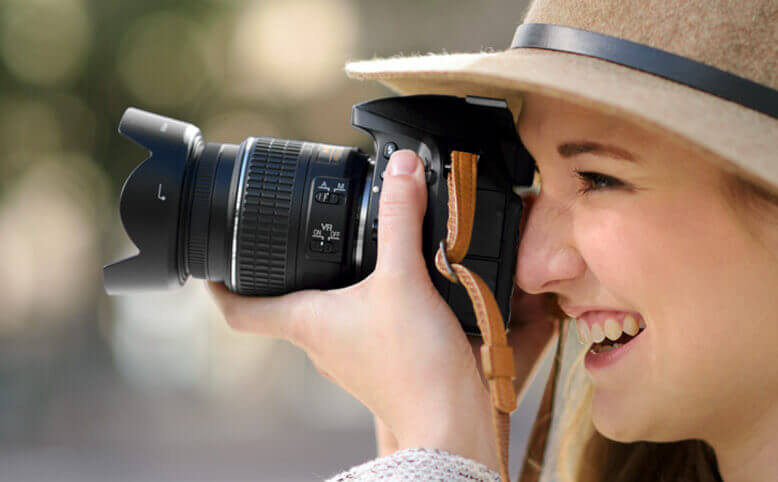Digital Camera
Digital cameras are designed to be familiar to anyone who has ever used a film camera. But they have many extra helpful features too...
Most digital cameras have similar basic features found on the side, the front, the top, and the back. In this article will introduce you to the side and the front typical features of a compact digital camera, and will go on to discuss more specialised functions later in the article. Is important to check the manual supplied with your camera to see which additional features your camera has.
The Front Features
1: Camera Auto Focus (AF) Sensor
Special sensors help to focus automatically. Some cameras 'sense' changes in contrast, while others use a beam of infra-red (IR) light, particularly in low light. Higher specification cameras sometimes use a combination of both systems and might have Face Priority AF where the camera can 'See' a face and focus only on that.
2: Camera Lens
Most digital cameras come equipped with a zoom lens that enables more or less of a scene to be included by 'zooming' in and out. These changes in focus length are reflected in the viewfinder and on large display screen on the back of the camera.
3: Camera Viewfinder
This enables you to view the scene to be photographed. There are two types of viewfinder; Electronic Viewfinder and Optical Viewfinder. Using an optical viewfinder means you can turn the large colour screen off, saving battery power. An electronic viewfinder (EVF) uses a little power, but has the benefit of being able to display camera information.
4: Camera Built-In-Flash
Most digital cameras have a built-in automatic flash unit that can be used to provide extra light if it is dark, or to reduce shadows on heavily shaded subjects in bright sunlight.
The Side Features - digital photography tutorial
1: Digital Camera PC/AV Socket
Beneath the side cover, you will find a socket that allows you to connect your camera to a computer and / or an AV (audio visual) socket that will allow you to display images directly on your TV, depending on the model you own.
2: DC (Mains Power) Socket
The DC socket also lies beneath this cover, which allows you to plug the camera into the mains to power it. On some models, a mains adapter will be supplied; if not, you will need to buy one. Some cameras can recharge their batteries when plugged into the mains.
3: Wrist Strap Lug
You attach the camera's wrist or carrying strap here. Wrist straps are a great way to carry your camera. They secure the camera to the wrist without getting in the way. If you need that extra hand, you can let it safely dangle from your wrist or you can let it one end hang from the strap and cup the other end in your hand. They can be on the right or left side of the camera depending on your preference. There are many ways to use the wrist strap.
A black rubber o-ring slides to reduce the strap opening. The strap comes with a 1/2" split ring to attach to the camera.
Regular wrist straps are large enough for most people but some people need a larger strap. For those with larger hands (if you wear a large glove) you can have the Long strap and for those that need even more room the Extra Long strap will be the deal.
That concludes the front and the side camera features, see the our next article that covers the top and the back camera features.
We hope you've found this article educational and also informative. Tabitha Mwendo: An Internet business consultant and a writer. Today, she focusing on Best Digital Camcorder [http://www.edigitalcamera.org/] and Digital Video Camera Review theme. For more inspiration on digital photography tutorial check [http://www.edigitalcamera.org/]
Article Source: https://EzineArticles.com/expert/Tabitha_W_Mwendo/807898
Article Source: http://EzineArticles.com/5681022
